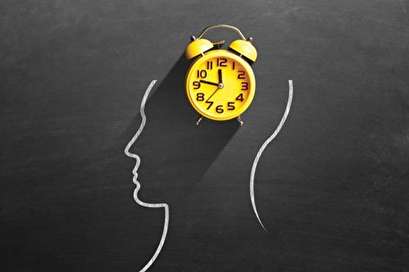TEHRAN, December 29 -A new way to measure internal time could yield insight into sleep deprivation and disease
 TEHRAN, Young Journalists Club (YJC) -Are you an early-rising lark or a night owl? These terms have gained scientific credibility, with researchers determining such differences have a basis in genetics. The sci-fi-sounding jargon for this inclination is your “chronotype,” and it can create significant discrepancies between your internal biological time and the external time shown by the clock on the wall.
TEHRAN, Young Journalists Club (YJC) -Are you an early-rising lark or a night owl? These terms have gained scientific credibility, with researchers determining such differences have a basis in genetics. The sci-fi-sounding jargon for this inclination is your “chronotype,” and it can create significant discrepancies between your internal biological time and the external time shown by the clock on the wall.
Now three teams of scientists are converging on a way to read a person's internal time from blood samples.
A quick, accurate and cheap method for doing this could maximize the benefits of time-sensitive medical treatments and help researchers study the links between disrupted biological clocks and various chronic diseases.
The system that controls daily biological rhythms is called the circadian clock. It helps to regulate the activity of around 40 percent of our genes, orchestrating rhythms of eating, body temperature and blood pressure.
Virtually every cell in the body contains its own circadian clock machinery; the master clock that synchronizes them all—a tiny brain region called the suprachiasmatic nucleus—controls levels of hormones important for the sleep-wake cycle. Chronotypes vary so widely that two people's internal time can differ by eight hours or more. “They can share the same bed without meeting,” says chronobiologist Achim Kramer of Charité University Medicine Berlin, who leads one of the groups developing the new technique.
The current gold-standard method of measuring internal time, called dim light melatonin onset, requires numerous blood or saliva samples, taken hourly in low-light conditions.
In contrast, the three recent studies describe a simpler technique that needs only one or two blood samples (depending on the exact methods used in each study) and thus could make biological time measurements part of routine clinical practice. The general approach involves assessing fluctuating gene activity by measuring changes in RNA levels in blood.
Machine-learning algorithms then “learn” which genes give the best indications of biological time. “Everybody's going in the same direction” in this area of research, says physiologist Derk-Jan Dijk of the University of Surrey in England, who leads one of the other groups. “The field is excited about this.”
Computational biologist Rosemary Braun of Northwestern University led the most recent study, which was published last September in the Proceedings of the National Academy of Sciences USA.
Braun's team claims its method is the most generalizable—it can be used with any technology for analyzing gene activity. But it requires two blood samples, whereas the studies by Kramer's team (published last September and first published online last June, in the Journal of Clinical Investigation) and by Dijk's team (published online in February 2017 in eLife) describe methods that can work with just one.
Kramer and Dijk have validated their approaches against the gold standard; Braun's team has not, making direct comparisons difficult. “It may turn out their measure is better,” Dijk says. “But for now we don't know.”
The Kramer team's method agrees with the melatonin method to within about half an hour. One reason for this accuracy, Kramer says, is that the researchers extract just one cell type—monocytes, which display strong circadian oscillations—from blood. This requires a more complex blood analysis than the other groups' methods, but Kramer's study is the closest to clinical application, Dijk says.
The next step is to find out how well each group's method works in people whose circadian rhythms have been disrupted by jet lag, shift work or illness, Dijk says.
These sleep disturbances can cause numerous ill effects, which some evidence suggests can be mitigated by realigning people's clocks using light exposure or the sleep hormone melatonin.
The new technique will enable doctors to monitor the efficacy of such treatments. Circadian disruptions have also been linked to illnesses, including diabetes, heart disease, neurodegenerative diseases and depression. “We know there are links,” Braun says. “But we don't know precisely how they work.” Providing easy measurements of internal time will help researchers find out.
The effectiveness of some medical treatments, such as chemotherapy or blood pressure medication, varies with the time of day they are administered [see “Take Your Medicine ... Now”].
Exploiting this to maximize a drug's benefits is known as chronotherapeutics. Because people's internal time most likely also makes a difference, being able to measure it more easily would help doctors personalize treatments.
“This could mean lower doses, fewer side effects, greater efficacy,” Braun says. “We're really excited about the potential.” How big of a difference this timing makes is not clear, however, because it has been difficult to separate patients by chronotype to investigate. This technique could help foster such studies. Grouping patients in this way could also increase success rates of new therapies in clinical trials, Kramer says.
Source: scientificamerican
 TEHRAN,
TEHRAN,